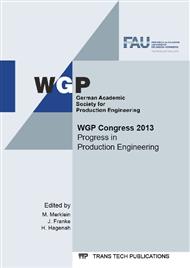p.293
p.303
p.311
p.319
p.327
p.335
p.343
p.350
p.359
Gamification in Management Decisions: Judging Global Production Networks in a Cyber-Physical Way
Abstract:
The judgment of global production networks is facing three major challenges. The complexity, measurable through the huge solution space, as well as the time-consuming preparation of a decision in line with the limited amount of time of the final decision makers – CEOs and upper management. The experience from several industry projects showed the demand to transfer and apply the concept of gamification in a cyber-physical environment to decision-making in Global Footprint Design. Smart IT tools, which support the intuition and practical knowledge of the decision maker but do not finally make the decision for them, are needed. Based on general criteria for successful gamified IT tools three specific requirements for judging global production networks are derived: value creation, ludic goal orientation and autonomous discovery. The major challenges and these specified principles of gamification are addressed within the scope of an IT tool which simplifies and improves complex global footprint decisions by employing elements of gamification. It is analysed to which degree the criteria are already fulfilled, which benefits this prototype of a gamified IT tool can offer and what future research has to be conducted in order to fully let CEOs game their global footprint strategy.
Info:
Periodical:
Pages:
327-334
Citation:
Online since:
September 2013
Authors:
Keywords:
Price:
Сopyright:
© 2013 Trans Tech Publications Ltd. All Rights Reserved
Share:
Citation:


